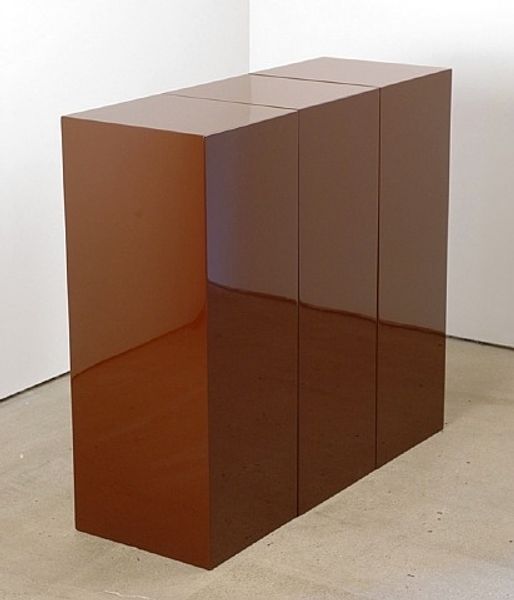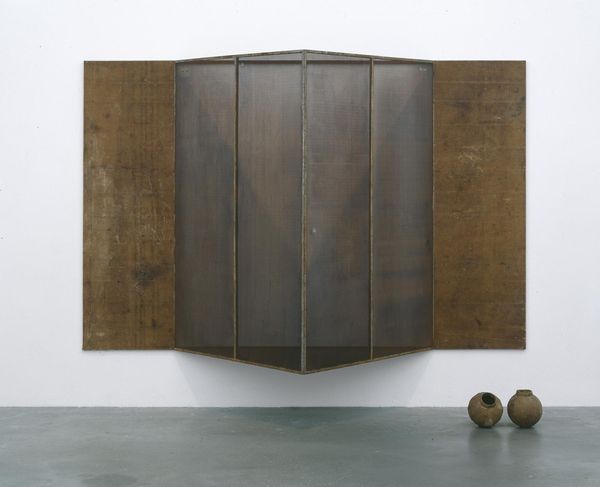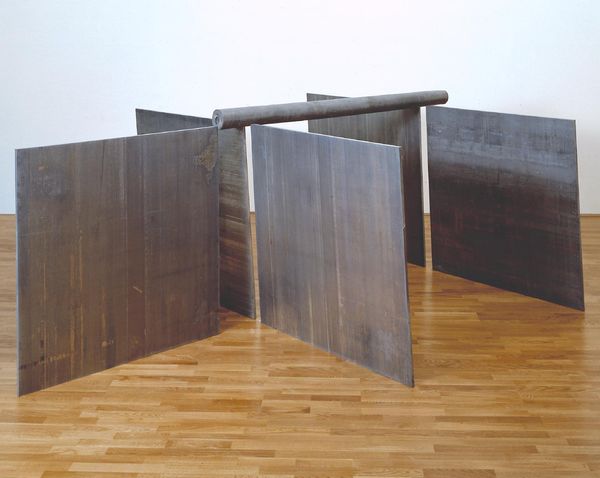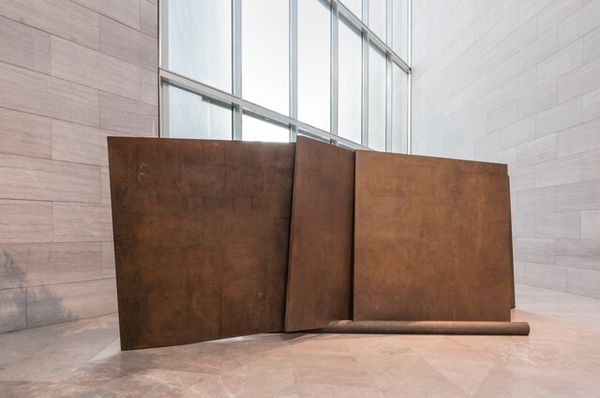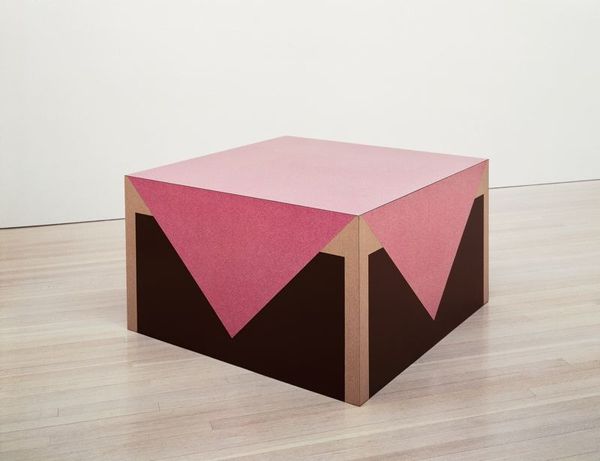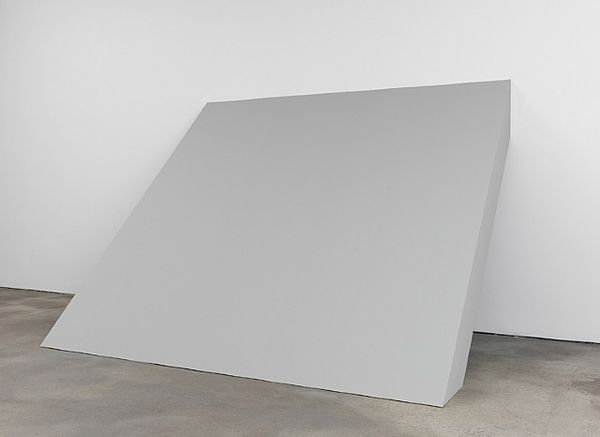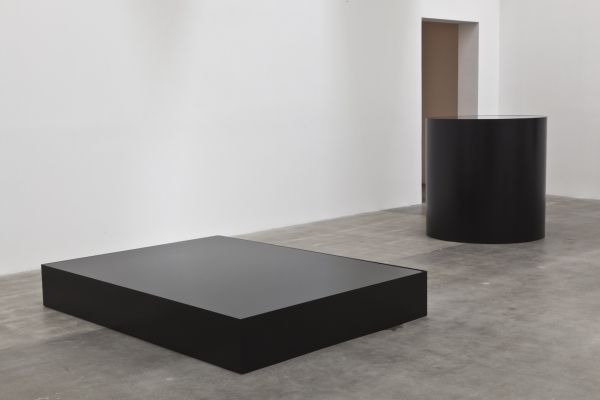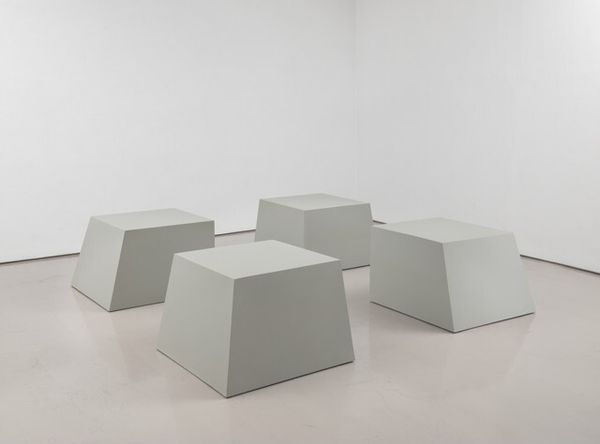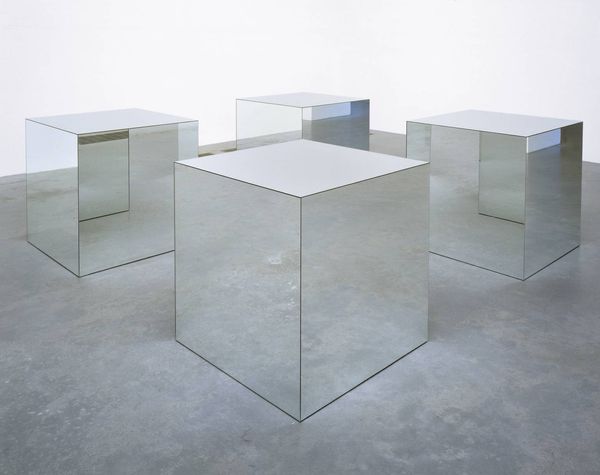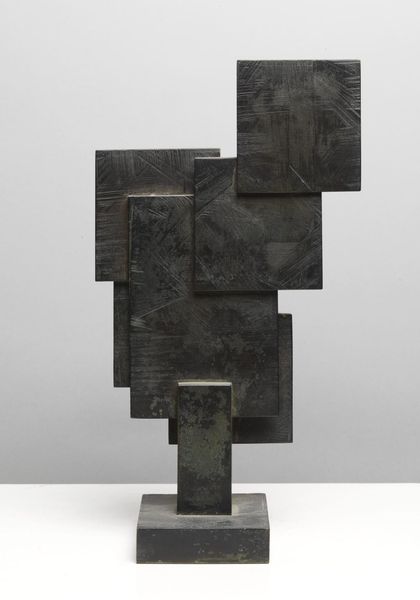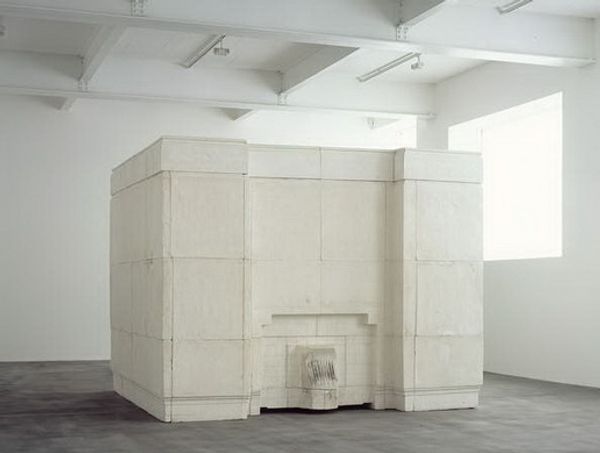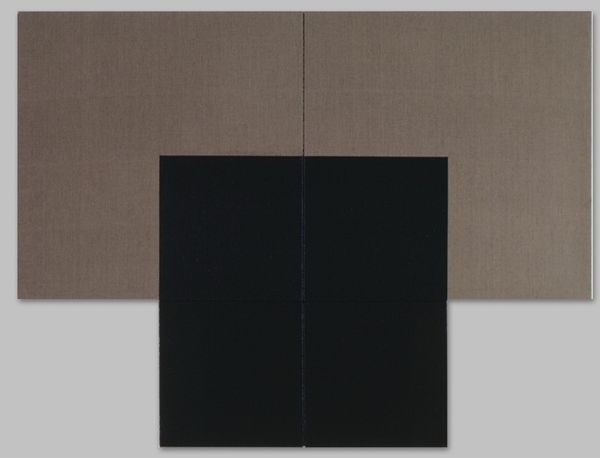
metal, found-object, sculpture
#
abstract-expressionism
#
abstract expressionism
#
minimalism
#
metal
#
found-object
#
form
#
geometric
#
sculpture
#
muted colour
Dimensions: overall: 182.9 x 182.9 x 182.9 cm (72 x 72 x 72 in.) gross weight: 500 lb.
Copyright: National Gallery of Art: CC0 1.0
Curator: Here we have Tony Smith’s *Die*, conceived around 1962 and fabricated in 1968. This sculpture presents a six-foot cube of steel. Its presence really commands the space, doesn't it? Editor: Absolutely, it’s hulking! Sort of ominous and captivating all at once. It makes you wonder if it will tip over. There’s something grounding about that dark color, almost rusty. It feels raw, industrial. Curator: Well, that raw feel certainly speaks to the piece’s construction. Fabricated industrially, Smith embraced the potential of this type of fabrication early. He specified its dimensions over the phone. The six-foot dimension is crucial, apparently; Smith is on record saying that anything larger would become architecture while anything smaller would be merely an object. Editor: Right! And, knowing it's a steel fabrication impacts me, and I think it transforms the sculpture too. My initial interpretation comes face to face with the labor of creating this perfectly imperfect cube. Curator: Imperfect being the key, because even within the rigid geometry, the textures and tonal shifts create visual interest that subverts the uniformity. Smith's artistic choices are inextricably bound up with these kinds of methods. It invites viewers to consider scale, volume, and the interaction between art and industrial production. Editor: I can't help but think that "Die" isn't just a word, but a heavy metaphor. It’s not simply about its making. It suggests ideas of mortality, containment… almost like a mausoleum in minimalist form. What does the artist himself tell us? Curator: That gets a little complicated. Smith initially declined to offer explanation, believing the sculpture should speak for itself, although its title inevitably evokes death, and considering it was conceived around the death of his father… It's hard to ignore that. Editor: Hmmm. Ultimately, thinking about what a sculpture can signify—not just what it *is* made from—can change a visitor’s relationship to it. Curator: Indeed, engaging with both the material reality and the conceptual possibilities creates a richer and maybe more personal appreciation of Smith's work here.
Comments
No comments
Be the first to comment and join the conversation on the ultimate creative platform.
